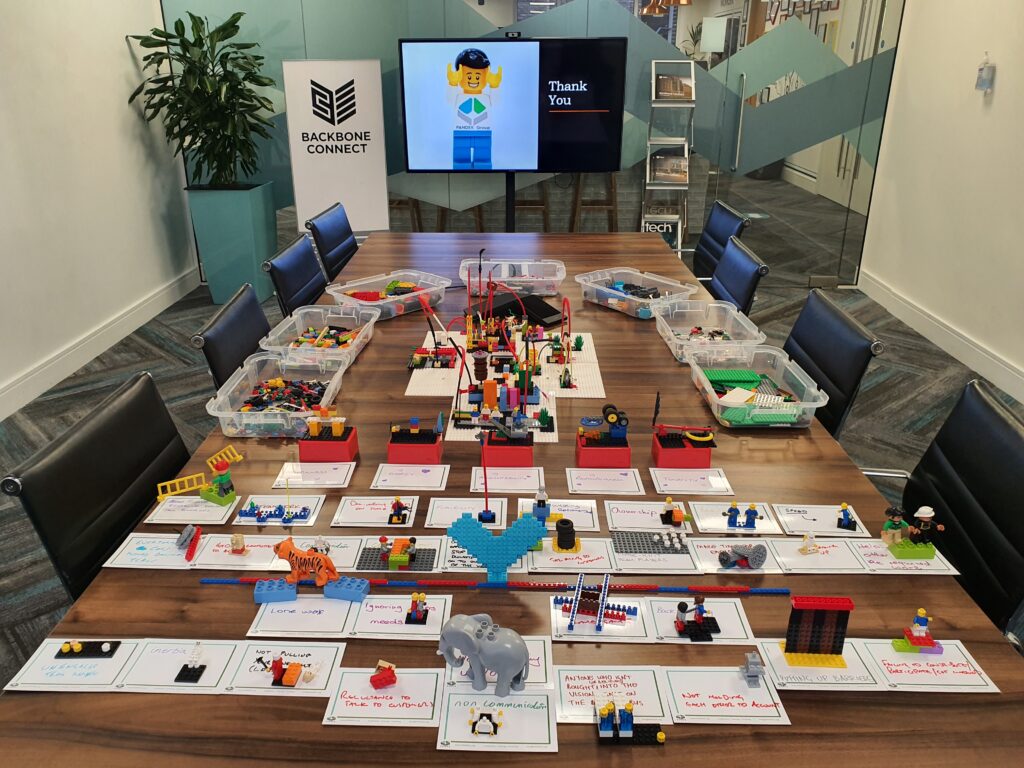Maximising Team Performance with Team Coaching: Explaining Its Role in Changing Team Dynamics and Driving Collaborative Success
Welcome to our blog, where we explore the transformative power of team coaching in unlocking …

Welcome to our blog, where we explore the transformative power of team coaching in unlocking …
Imagine a team where innovative ideas are lost in endless planning, strategic plans never get …
All organisations are constantly searching for reliable methods to enhance performance and boost productivity. As …
Ah LEGO, that familiar old toy with the colourful bricks. It probably provided you with …
You probably already have a general idea of the importance of team alignment in a …
Have you ever wondered how to create a team vision statement to map out your …
In our last article we examined the difference between a vision statement and mission statement. …
For the last few months, our blog posts have focused on how you can improve …
Are you new to a leadership role? Well worry not, we have seven tips to …
In the world of business, leadership is one of the most important components to creating …
You probably already have a general idea of the importance of team alignment in a business is, but there is so much more to it than simply working together. Team alignment defines a group of people who understand a set of shared objectives and agree on how to reach them. The precise “how” of alignment will differ by organisational culture, but team alignment should encompass all employees and management.
No one is truly self-sufficient; everyone must, at times, rely on the knowledge and comfort of others to thrive. If the pandemic has taught us anything, it is that the phrase “no man is an island” rings true. Companies with strong alignment report higher growth, performance, and profitability. Not only that, but they also strengthen the ability of their organisation to weather unexpected disruptions. Team alignment can be a competitive differentiator – let’s take a look at why:

The importance of team alignment is clear and there are multiple ways in which you can witness these benefits in your organisation. You are now probably wondering how you can achieve this and what your organisation’s team alignment might look like. Firstly, what does it look like for a business to be properly aligned?
Now we’ve seen the importance of team alignment and how it looks in an organisation, it is time to consider how we implement it. Implementation is not as challenging as it sounds. Here are a few tips to start incorporating team alignment into your business if you want consistent outstanding results:
Aligning your organisation begins with establishing and articulating your organisational purpose and strategy. When employees perceive that leaders at all levels of an organisation support a new strategy, it is more likely to be implemented successfully. A recent study found that frontline employees were less likely than company leaders to understand how their role contributed to the organisation’s purpose. Management is responsible for translating how it applies to teams and individuals.
High-performing teams have to be nimble and focused – so having clear, streamlined communication is essential. Keep everyone on the same page by establishing clear processes and expectations for communication. For example, teams might use Slack channels for water cooler chats and team updates but rely on project management tools like Asana to house project data, define responsibilities, and track progress and assignments. Having set communication processes helps prevent conflict and ensures key information is shared with the right people, assignments and responsibilities are clear, and nothing falls through the cracks.

High-performing teams know their “why” and work together to support a shared team vision. When employees don’t understand how their job fits into the context of the overall goals and mission of the organisation, they are less engaged and productive. Therefore, by emphasising the importance of combining team alignment and business objectives, you can increase employee engagement.
High-performing teams are made of highly skilled employees who feel supported by their managers and have a unified purpose to drive team and business success. Identify relevant development opportunities that focus on team needs, priorities, and individual goals. Offer employees upskill opportunities to help them feel motivated, empowered, and better equipped to do their job.
Ask questions, explore possibilities, and adapt work based on your strategic goals. When teams learn from past mistakes, they are more effective, efficient, and innovative. Businesses that are successful are often efficient and innovative organisations, rather than static ones.
Unfortunately, developing a high-performing team in the office is not an overnight process; alignment is a marathon, not a sprint. Therefore, achieving an aligned team for the organisation will take time. As an employer, your challenge is to bring the right mix of skills and experience to the role. Nurturing these fundamental characteristics will make the payoff worth it.
In our next article we will be looking at the science of LEGO® Serious Play®
FOR INQUIRIES, PLEASE EMAIL US AT [email protected] OR
BOOK A FREE 30-MINUTE CONSULTATION AT HTTPS://PANDEK.ORG/.
If you would like to hear more about events, offers, blogs and newsletters CLICK HERE.
We understand that each company’s situation is unique. Tell us more about your needs and challenges and we will get back to you soon with some ideas, or book a free conversation and begin your journey.
COPYRIGHT © 2024 PANDEK GROUP LIMITED - ALL RIGHTS RESERVED - COMPANIES HOUSE - 12467210 - Operating across the UK - Based in the South West